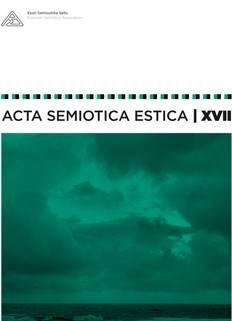Budismi semiootika I - Tartu-Moskva koolkonna panus: Pjatigorski ja Mäll
Semiotics of Buddhism in Tartu – Moscow school: Piatigorsky and Mäll
Author(s): Andres HerkelSubject(s): Semiotics / Semiology, Semiology, Logic, Indian Philosophy, Philosophy of Mind, Philosophy of Language
Published by: Eesti Semiootika Selts
Keywords: semiotics and Buddhist studies; myth and psychology; dharma; zero way; śūnyavāda; metalogics; metalanguage; tetralemma; Alexander Piatigorsky; Linnart Mäll;
Summary/Abstract: The article examines Buddhist studies within the Tartu–Moscow school of semiotics. At the beginning of Tartu semiotics there was a pleiad of orientalists and indologists using the semiotic approach for Buddhist studies. Alexander Piatigorsky and Linnart Mäll were important contributors. Piatigorsky and Mäll refrained from using theories and terminology from Western philosophy to interpret Buddhism. However, they used semiotic tools to describe such basic problems as: the hierarchies of thestates of mind; personological classifications; the difference between psyche and consciousness; Buddhist metalanguage and terminology; the term dharma; the impact of texts on the mind; the mechanisms of the production of new texts; zero and infinity as symbols for texts and sates of mind, etc. Their several articles in Tartu semiotics have timeless value for Buddhist studies. With the help of semiotics they were able to successfully deal with texts corresponding simultaneously to different states of consciousness and different levels of interpretation.
Journal: Acta Semiotica Estica
- Issue Year: 2020
- Issue No: 17
- Page Range: 10-32
- Page Count: 23
- Language: Estonian

